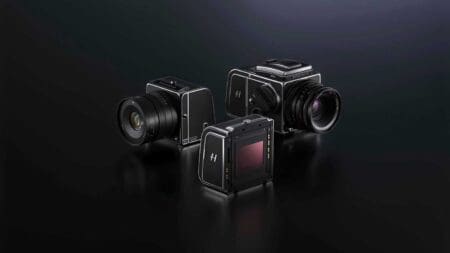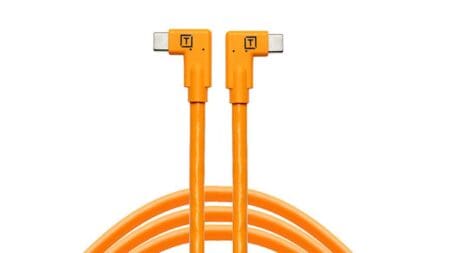What is the Panasonic GX9?
Panasonic introduced the GX9 to sit in the middle of its range as a “premium street photography camera”. With its small body size and flat rangefinder type design, it’s also ideally suited as a travel camera – especially if you already own another Micro Four Thirds camera.
It follows on from – but doesn’t replace – the GX8, being smaller in size and closer in form factor to the entry-level GX800 camera. It houses a 20.3 megapixel Four Thirds sensor, without an anti-aliasing filter for increased detail resolution.
It has a host of other appealing specifications, including a high-resolution tilting viewfinder, a tilting touch-sensitive LCD screen, 4K Photo and Video modes, and compatibility with the huge range of Micro Four Thirds lenses.
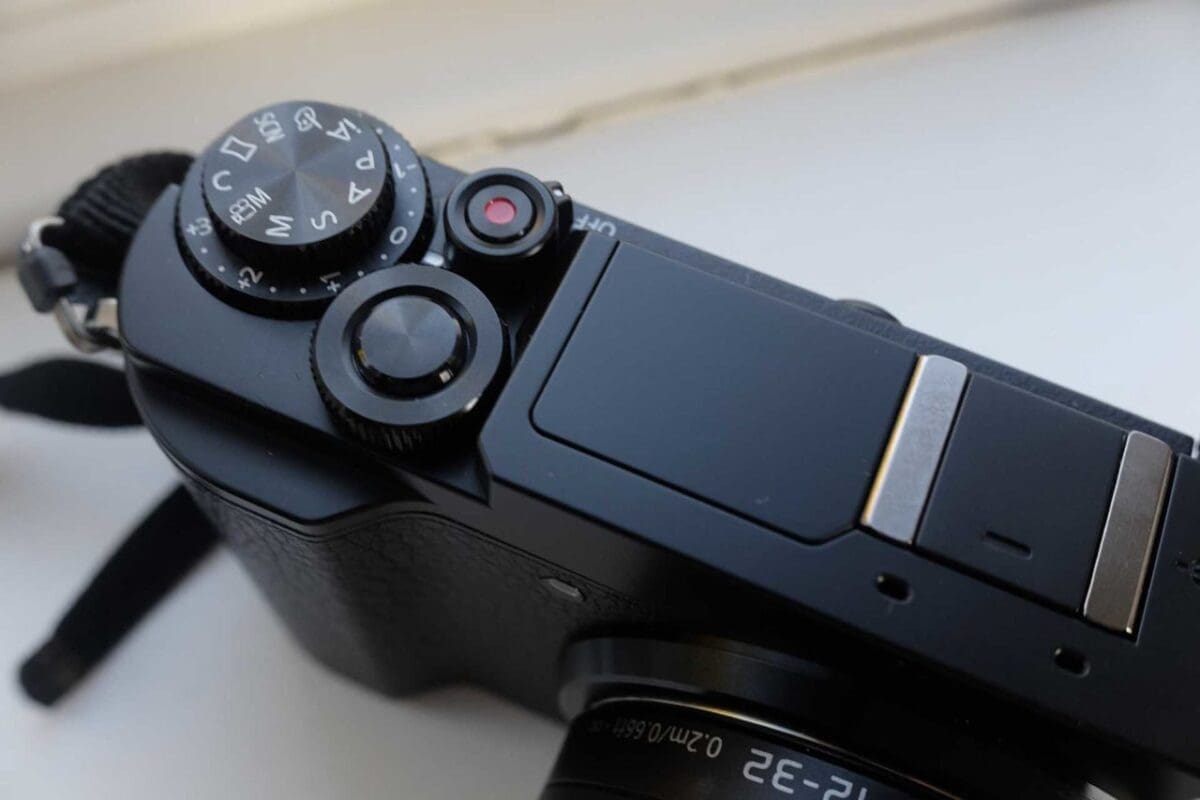
Build and Handling
Panasonic enjoyed great success with the GX7, with many appreciating its small size and weight. For some reason, Panasonic decided to make the GX8 much bulkier – and while it was a very good camera – the form factor never really struck a chord with me.
Fortunately, Panasonic has decided to go back to the smaller size for the GX9, and I have to say I’m pleased with the decision. For me, when I’m looking for a travel or street-style camera, I want it to be as small and discreet as possible.
Not only is the GX9 small and light, it’s also got an attractive leather-type coating on the outside, plus an indent on the grip for your fingers to sit. Overall, it’s got a high-quality appearance and feel, looking smart and stylish.
Naturally, in order to keep the size down, there have been a few changes made. One of the most obvious is that the GX9 now has a tilting, rather than a fully-articulating screen.
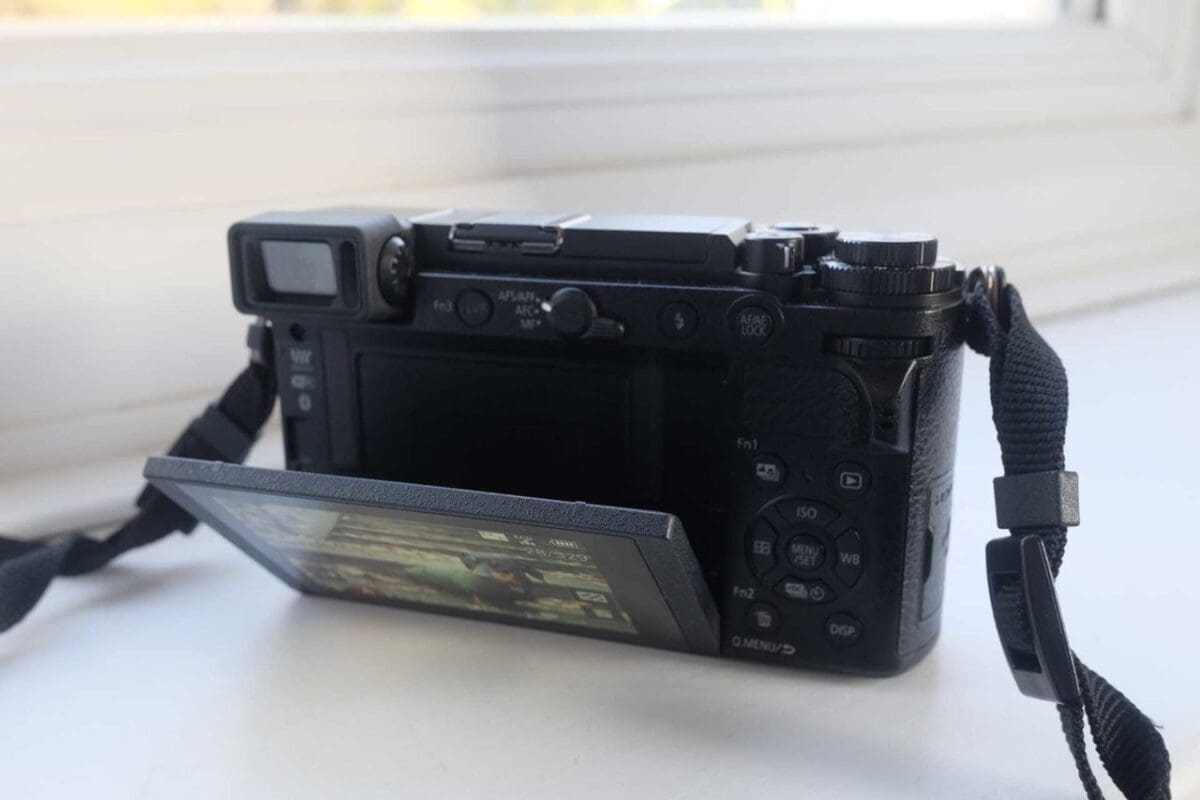
I actually tend to prefer tilting screens for cameras like this, where discreetness is the aim of the game, but it is much less useful when shooting portrait format images from awkward angles.
Never-the-less, the touch-sensitive screen is very responsive – I use it predominantly to set the autofocus point, which you can continue to do while looking through the viewfinder, but it’s also available when scrolling through images in playback, or changing menu settings.
Tilting viewfinder
Speaking of the viewfinder, the Panasonic GX9 retains the tilting mechanism which was found on the GX8. A tilting finder is useful for shooting from various angles, such as straight upwards, or from chest height. The viewfinder itself is bright and clear and has no obviously noticeable lag.
Despite the camera’s small size, the panasonic GX9 has plenty of dials and buttons which give you direct access to a range of commonly used functions. An large exposure compensation dial sits underneath a smaller mode dial, both being easily reached by your thumb for making quick changes.
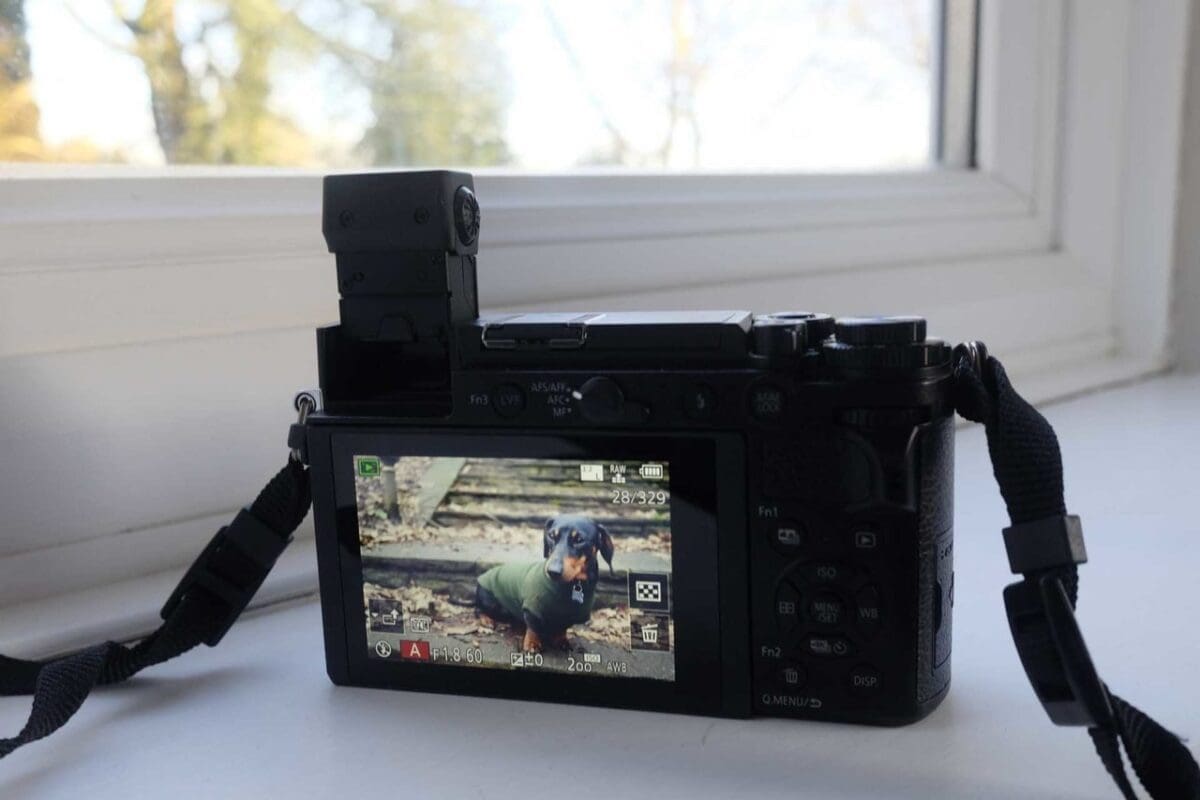
Just in front of these dials is a multi-purpose dial, which can be used for altering various settings, depending on the shooting mode you’re in – for example, in aperture priority it will control aperture. The dial also houses the camera’s shutter release.
A video record button is usefully recessed into the on/off switch, making accidental movie recording almost impossible. The on/off switch is nicely stiff, again helping to prevent switching it on in a bag (or a large pocket) and wasting battery power.
The back of the camera sees a plethora of all the usual buttons, including a four way navigational pad, access to 4K Photo Modes, plus the extremely handy quick menu. From the quick menu you can control various functions, including Picture Style, Picture Setting, Image Quality, AF Mode and so on. A small switch just above the screen takes you between the various AF options of AF-S, AF-C and Manual.
One of the biggest problems often cited with mirrorless cameras is battery-life. Quite rightly, when you consider that most modern DSLRs have quoted battery life stats well into the hundreds, it can make photographers nervous of running out of juice – especially while out travelling and without the time or access to a plug point.
Power Save LVF will boost battery life from 260 to 900 shots
To address this issue, Panasonic has introduced a “Power Save LVF” feature for the GX9, which boosts the standard battery life from 260 shots up to a rather more impressive 900 shots.
It achieves this by using a system similar to stop-start technology in a car, automatically detecting when the camera is not in use for a couple of seconds and switching it off, switching it back on as soon as you lightly press the shutter release.
In everyday shooting, I probably wouldn’t have this feature switched on, but if I knew I was likely to be taking a lot of pictures in any given day (for example while on holiday), it’s a very useful feature to have.
Panasonic has also added USB charging for the GX9, the port for which is hidden behind a clever retracting door, making it easier to charge the camera while out and about, using portable power banks, your laptop and so on.
The Panasonic menu system is relatively straightforward and easy to follow, but a useful new addition is the “My Menu” tab, whereby you can add your favourite or most-used settings into one tab to save you searching through various screens to get to the setting you need.
4K Photo is something which Panasonic always pushes with its cameras, so it is, of course, no surprise to see it here. In case you haven’t come across it before, it’s basically a way to extract stills from short 4K video clips, in camera, to help you freeze action.
There are a couple of new useful 4K Photo features for the GX9, which includes the ability to skip straight to the right part of the action in a longer recording, and the ability to merge together various frames for a sequence composition effect.
I’ve been using the GX9 with a variety of different lenses but owing to its small size and weight, it is best matched with the smaller zooms and primes from the Micro Four Thirds line-up. Bearing in mind that you can use both Panasonic and Olympus lenses, as well as third-party optics, the lens choice for the Micro Four Thirds mount is extremely vast.
The standard kit lens available for this is the 12-32mm collapsible f/3.5-5.6 optic. It’s this I’d recommend if you are trying to keep the size and weight down, perhaps switching to pancake or small primes if you find the quality to be a little more lacking.
Anybody who pre-orders the GX9 will be entitled to claim a free 25mm f/1.7 lens. With Micro Four Thirds, you need to double the number written on a lens to get the equivalent focal length – making this lens a 50mm equivalent, ideal for street photography and quite a tempting offer for anyone looking to buy this camera for such a purpose.
Performance
I had the chance to use the GX9 for a few days ahead of the official launch, and my early impressions were positive.
The 20.3 million pixel sensor is capable of resolving very fine detail, while colours are lovely and vibrant. As we’ve come to expect from Four Thirds sensors, it copes best when light levels are good. In low light, shooting at high sensitivities reveals a loss of detail which is particularly noticeable when you examine at 100%.
While the overall impression of detail is reasonable if you stick to ISO 3200 or below, you can expect to see a little image smoothing at times.
Looking at the corresponding raw file, it’s fair to say that the camera applies a fairly significant amount of image smoothing when shooting at high ISOs. Raw files reveal both chroma and luminance noise – but a little more detail.
It’s therefore recommended that you shoot in raw and apply your own noise reduction to get the best balance of detail and noise when photographing certain subjects.
The camera’s all-purpose metering system does a good job to produce balanced exposures in the majority of conditions, while the automatic white balance system tends to reproduce roughly accurate colours most of the time.
When shooting in artificial light, the tendency is for the auto white balance to err towards warmer, yellowish tones – switching to a more appropriate white balance setting helps to compensate for this, or you can shoot in raw format and alter after the effect.
The GX9 uses the same autofocusing system as the GX8, meaning you have a 49-area contrast-detection system, boasting speeds of just 0.07 seconds. In use so far, I have found it to be very quick and responsive, locking onto the subject with relative ease.
Unlike the G9, the GX9 is not really designed to be an action or sports camera. While it is reasonably capable of following predictably moving subjects, using 4K Photo is my preferred choice when trying to capture split-second moments.
Panasonic GX9 review sample Photos








Verdict
I was extremely pleased when I saw that for the latest GX camera, Panasonic had decided to use the smaller form factor. Having now spent a good deal of time using it, I can also confidently say that the GX9 is a great little camera to use.
I like to have a camera with me pretty much at all times, but I don’t like to carry around anything heavy or bulky – so for me the GX9 is the perfect travel and street camera – being compatible with a wide range of lenses if I need them, but being small enough to fit in a small bag or even reasonably large jacket pocket.
The look of the camera is also very stylish, without attracting too much attention when using it out and about, which is ideal. There’s a good mixture of buttons and dials on the camera, while the tilting screen is very handy for composing from awkward angles – I’m personally not too bothered about articulation for a camera like this (others may feel differently).
Overall image quality is very good, particularly in good or bright light. In lower light, watch out for a little loss of detail in places, and try to stick to as wide an aperture as possible. Colours are nicely reproduced, being natural while also vibrant, while focusing is generally quick and accurate.
You can check out some sample images already taken with this camera, and we’ll be adding more as soon as we can. I can imagine this being a very popular camera with travel photographers, particularly those who already own something larger, like a Panasonic G9 or GH5, as well as those who are completely new to compact system cameras. It is relatively attractively priced too (£699 body only), with a very tempting pre-order deal to lure in street photographers.
While the GX9 may not be the most exciting camera announcement of 2018, it’s arguably one that’s likely to be extremely popular. Panasonic has made a cracking little camera that should have a lot of appeal for a variety of different users – I can see it doing very well, watch this space!
Panasonic GX9 Rating
Overall Score: [usr 4 text=”false” size=20]
Features: [usr 4.55 text=”false”]
Build & Handling: [usr 4.5 text=”false”]
Performance: [usr 4 text=”false”]
Image Quality: [usr 4 text=”false”]
Should I Buy The Panasonic GX9?
From its small size to its tilting viewfinder, tilting LCD, no anti-aliasing filter and a host of other interesting features, the Panasonic GX9 is perfectly adapted for street photographers. And it’s also very reasonably priced. So if you’re looking for a high-quality, portable camera for your travels and days out, this is one of the best options available.

